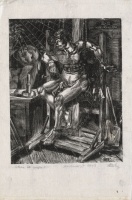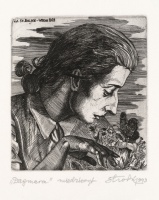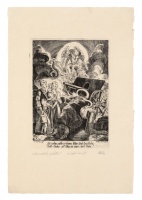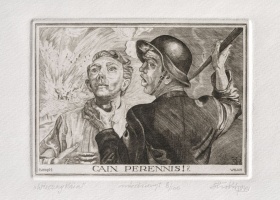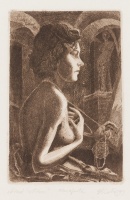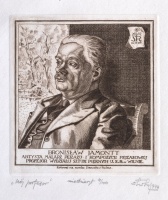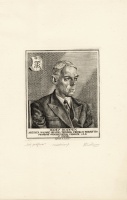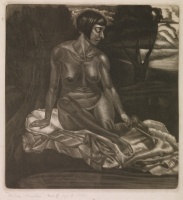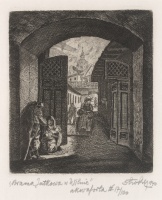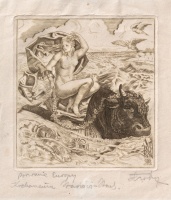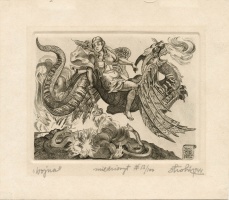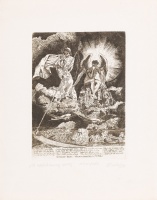
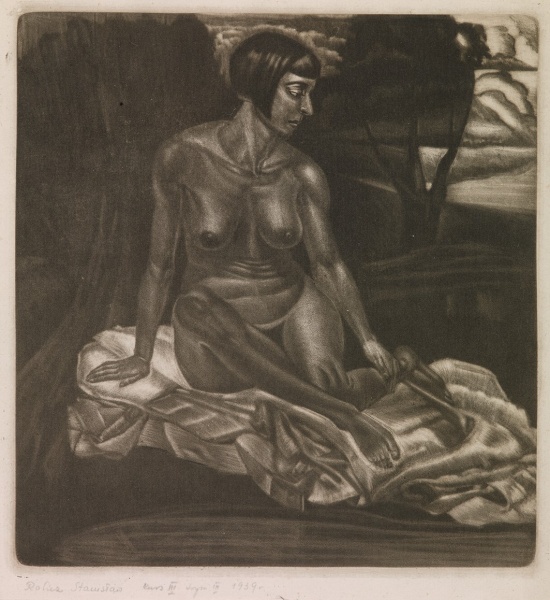

Sitting woman
| Author: |
Stanisław Rolicz (1913–1997) |
| Created: | 1939 |
| Material: | paper |
| Technique: | etching |
| Dimensions: | 22 × 21 cm |
| Signature: | unsigned |
Neoclassical artists not only resisted avant-garde trends, but also opposed Realism, Impressionism and Symbolism. They looked to historical and mythological themes for their inspiration, and introduced stylistic transformations to Classical art forms, seeking to bring them closer to their own times. Classical expression often merged with geometric Art Deco stylisation, which appealed to the taste of the interwar public. The characters in their paintings were also typical of the period: ladies like those seen in Renaissance portraits hold powder boxes and handbags in their hands, and show other signs of the 20th century. For example, in an etching by Stanisław Rolicz (1913–1997), a woman sitting in a Classical posture has bobbed hair, a popular style in the interwar period.
Text authors Dovilė Barcytė and Ieva Burbaitė
Source: Law firm Valiunas Ellex art album MORE THAN JUST BEAUTY (2012). Compiler and author Giedrė Jankevičiūtė, KAUNAS–VILNIUS / 1918–1945 (2021). Compilers and text authors Dovilė Barcytė and Ieva BurbaitėExpositions: “More Than Just Beauty: The Image of Woman in the LAWIN collection”, 12 October – 11 November 2012, National Gallery of Art, Vilnius; "1918-1945 / Kaunas-Vilnius", 27 August 2020 – 21 August 2021, Lithuanian Art Centre TARTLE (Užupio St. 40, Vilnius). Curators Dovilė Barcytė and Ieva Burbaitė.







